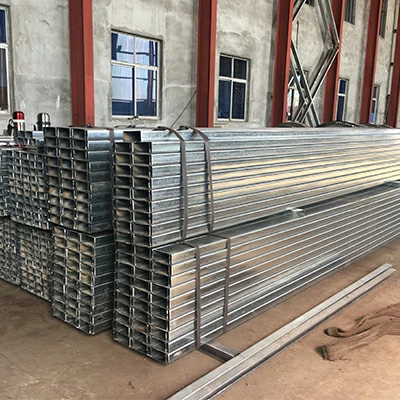Controlling the diameter and thickness of C channels during production is essential to meet specified standards and ensure the structural integrity of the final product.
Various measures and processes are employed to achieve precise control over these dimensions:
Diameter Control:
- Rolling Mill Parameters:
- The rolling mill, where the C channel is shaped, is equipped with adjustable rolls that determine the diameter. The gap between the rolls is carefully controlled to achieve the desired diameter. Regular maintenance and calibration of rolling equipment are essential.
- Roll Design and Quality:
- The design and quality of the rolls used in the rolling process play a significant role in controlling the diameter. Well-designed and maintained rolls contribute to the consistency and accuracy of the diameter. Regular inspection and replacement of worn rolls are important.
- Material Thickness and Properties:
- The thickness and properties of the raw material (usually steel coil or sheet) impact the diameter of the C channel. The material’s yield strength and elasticity affect its response to deformation during the rolling process.
- Inline Dimensional Sensors:
- Inline sensors or gauges may be installed along the production line to continuously monitor the diameter of the C channel during rolling. These sensors provide real-time feedback to control the rolling process and ensure that the diameter remains within specified tolerances.
Thickness Control:
- Rolling Mill Adjustment:
- The rolling mill parameters, including the distance between rolls and rolling speed, are adjusted to control the thickness of the C channel. Proper adjustment ensures that the material is compressed uniformly, resulting in the desired thickness.
- Material Thickness and Properties:
- The initial thickness and properties of the raw material are critical factors. The material thickness determines the starting point for the rolling process, and its properties influence how it deforms during rolling.
- Roll Design and Quality:
- The design and quality of the rolls impact the thickness control. Uniform and well-maintained rolls contribute to even compression and thickness reduction during rolling. Wear-resistant materials may be used to extend the life of the rolls.
- Cooling and Lubrication:
- Proper cooling and lubrication during the rolling process help manage heat generated by deformation. Controlled temperatures prevent excessive material thinning and contribute to consistent thickness.
- Inline Thickness Gauges:
- Inline thickness gauges or sensors are often used to measure the thickness of the C channel during production. China C channel factory These gauges provide real-time data for process control, enabling adjustments to maintain the specified thickness.
- Post-Rolling Treatments:
- Some C channels may undergo post-rolling treatments, such as sizing or straightening processes, to achieve final dimensions and improve thickness uniformity.
- Quality Control Sampling:
- Random samples of C channels are selected for more detailed quality control, including thickness verification. These samples may undergo comprehensive testing to ensure they meet the specified thickness requirements.
- Adherence to Standards:
- Manufacturers adhere to industry standards and specifications that define the acceptable tolerances for diameter and thickness of C channels. Compliance with these standards ensures that the channels meet the structural and dimensional requirements.
- Documentation:
- Diameter and thickness measurements are recorded and documented as part of the quality control process. This documentation provides a traceable record of the manufacturing process and facilitates quality assurance.
By implementing these measures and closely monitoring the production process, manufacturers can achieve precise control over the diameter and thickness of C channels, ensuring that the final products meet the required specifications and standards. Regular quality control checks and adherence to industry guidelines contribute to consistent dimensional accuracy.
